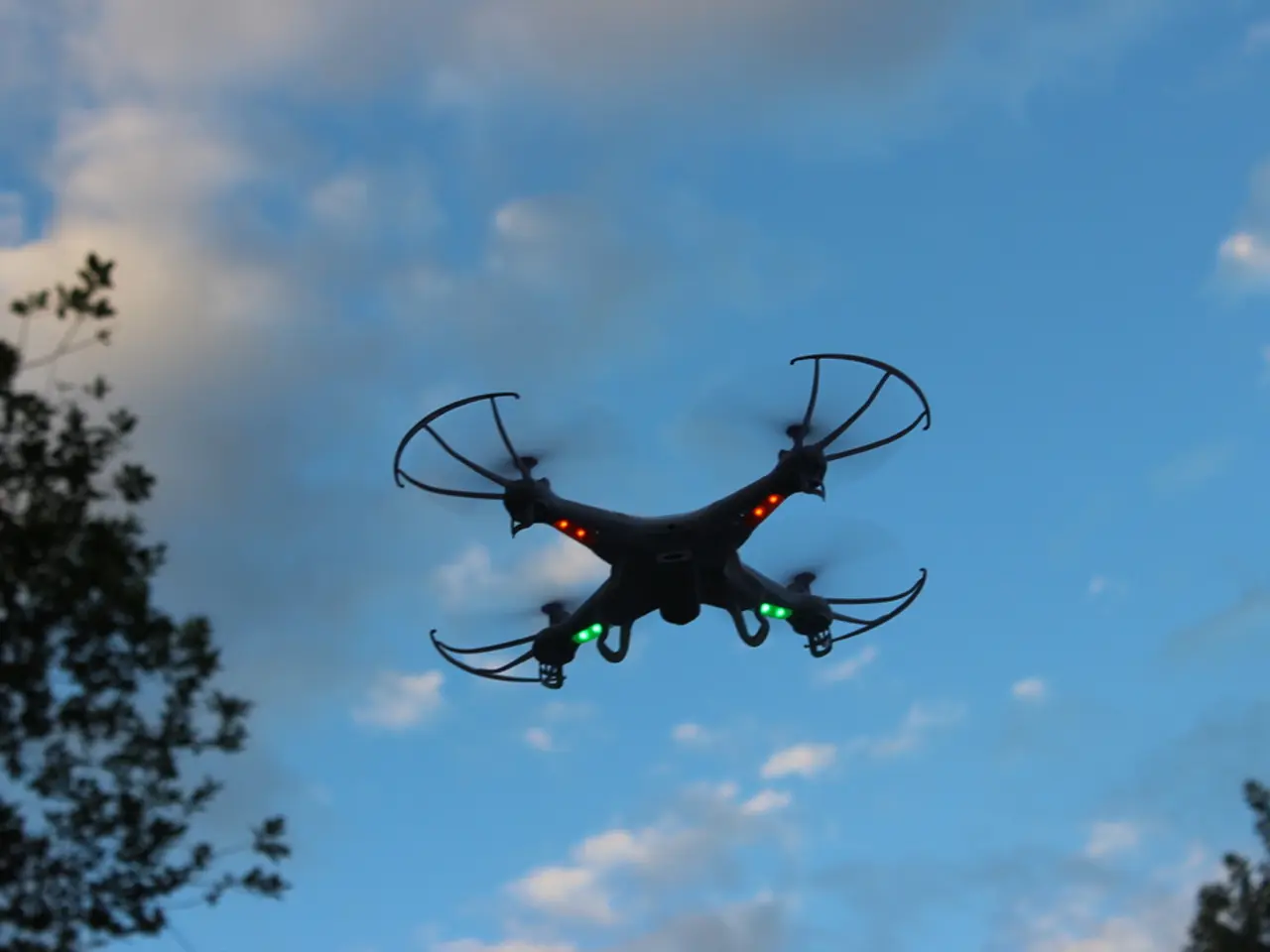Remote Identification (RID) Explained: Functioning and Understanding
In the ever-evolving world of drone technology, a crucial development has emerged, known as Remote ID. This digital identification system works by requiring drones to broadcast essential flight data, acting as a digital license plate for these flying machines.
The Remote ID system enables authorized entities, such as law enforcement, air traffic control, and other airspace users, to identify and track drones in real-time during their flights. This information is transmitted using wireless signals like Bluetooth or Wi-Fi.
There are two primary ways drones comply with Remote ID. The first is through drones equipped with built-in Remote ID capabilities, known as Standard Remote ID drones. Alternatively, drones lacking this functionality can use an add-on broadcast module to transmit the required information.
In the United States, most drones weighing over 250 grams must comply with Remote ID regulations, unless operated within FAA-Recognized Identification Areas (FRIAs). However, small drones under 0.55 pounds used solely for recreational purposes may be exempt.
The benefits of Remote ID for drone operations and safety are manifold. For instance, it enhances airspace awareness, allowing authorities and other aircraft to monitor drones’ positions, helping to avoid collisions and manage traffic. This is particularly important for advanced operations like Beyond Visual Line of Sight (BVLOS).
Remote ID also improves compliance and accountability, deterring unauthorized or unsafe flying and aiding enforcement when drones enter restricted or sensitive areas like airports or public events. Furthermore, it supports the safe integration of drones into national airspace, laying the groundwork for complex commercial missions such as drone deliveries and urban air mobility.
Lastly, Remote ID facilitates rapid identification of problematic operations. If a drone is flying dangerously, Remote ID signals allow law enforcement or the FAA to quickly locate the pilot or control station.
While current studies show that Remote ID broadcasts are reliably detected only within about one mile, and adoption among drone operators is still partial, the potential benefits for safety, security, and regulatory oversight are significant. Remote ID makes drone operations transparent to relevant airspace stakeholders, contributing to a safer, more secure, and more regulated drone landscape.
In the realm of data-and-cloud-computing, the Remote ID system, a pivotal advancement in drone technology, relies on technology to transmit essential flight data wirelessly, allowing authorized entities to identify and track drones. This technological innovation also supports complex commercial operations, such as drone deliveries and urban air mobility, by improving compliance and accountability.







